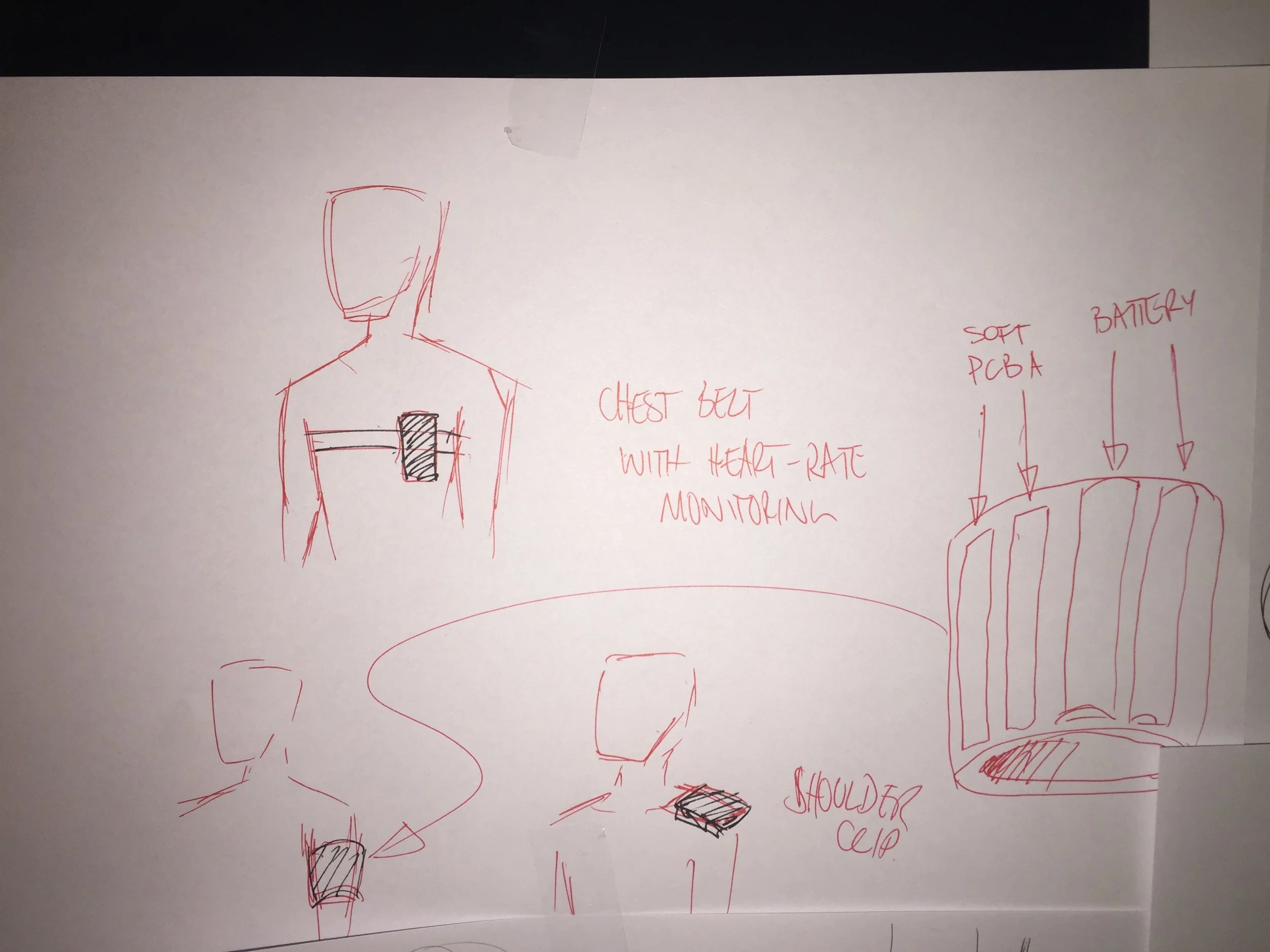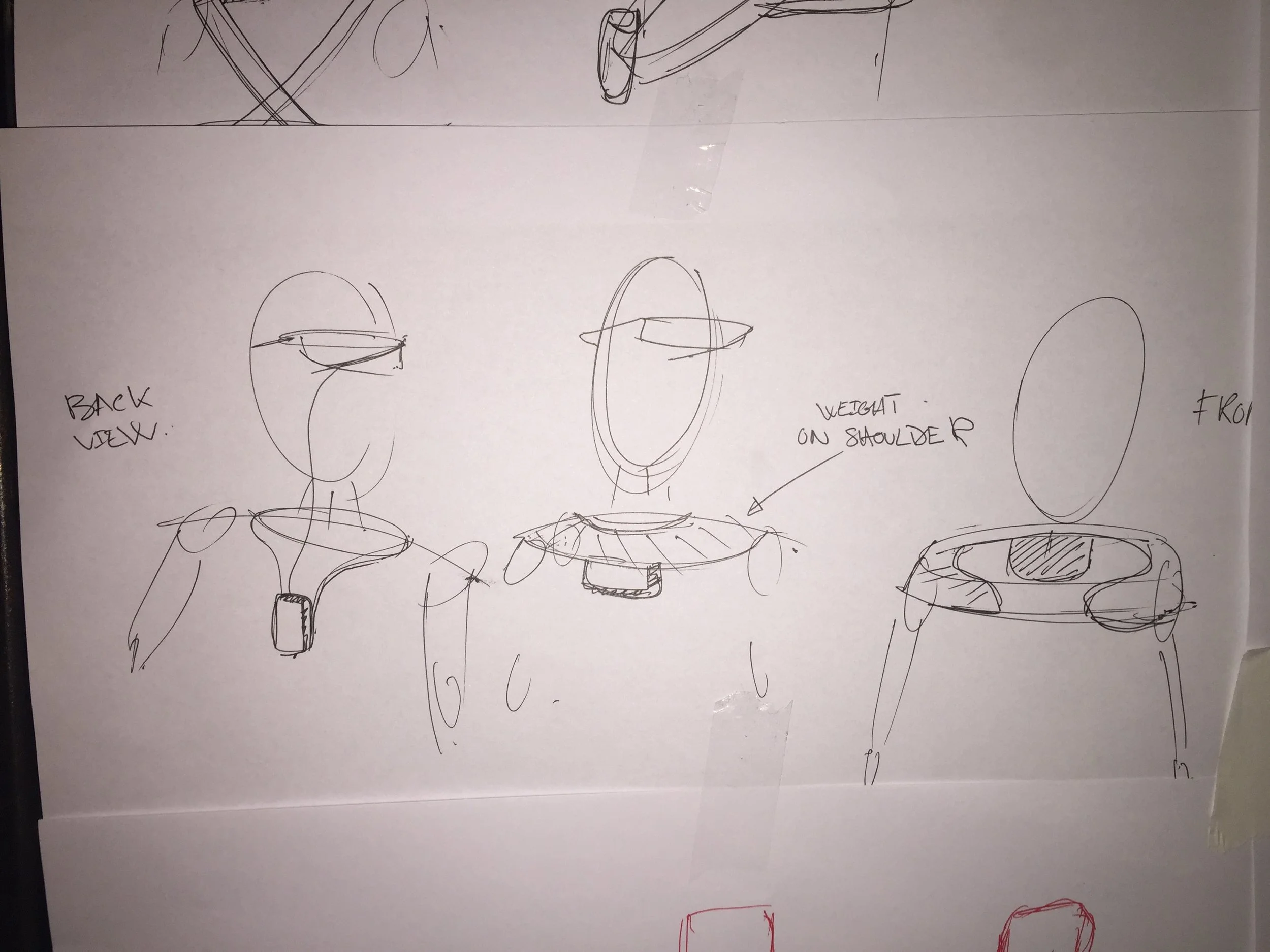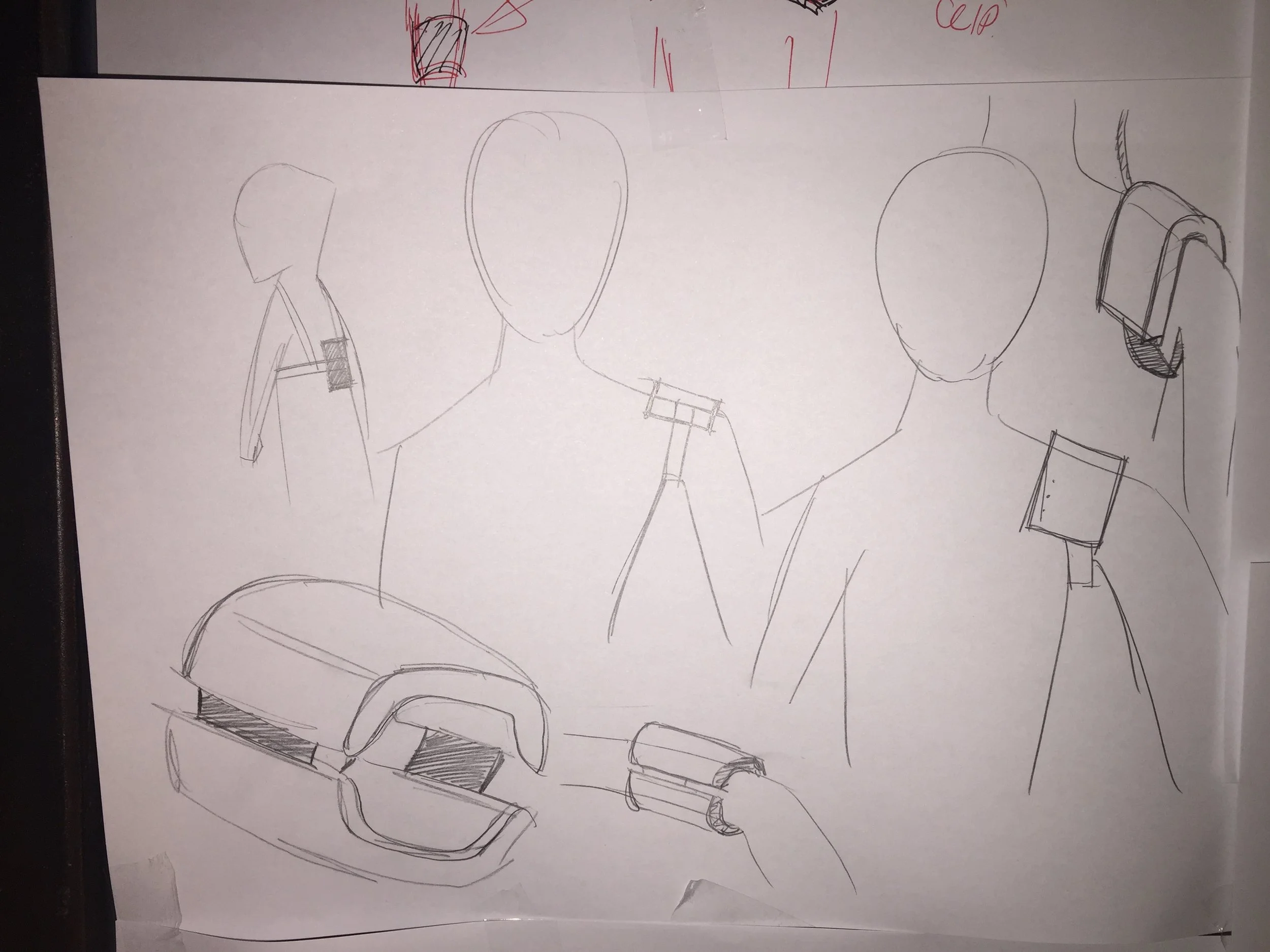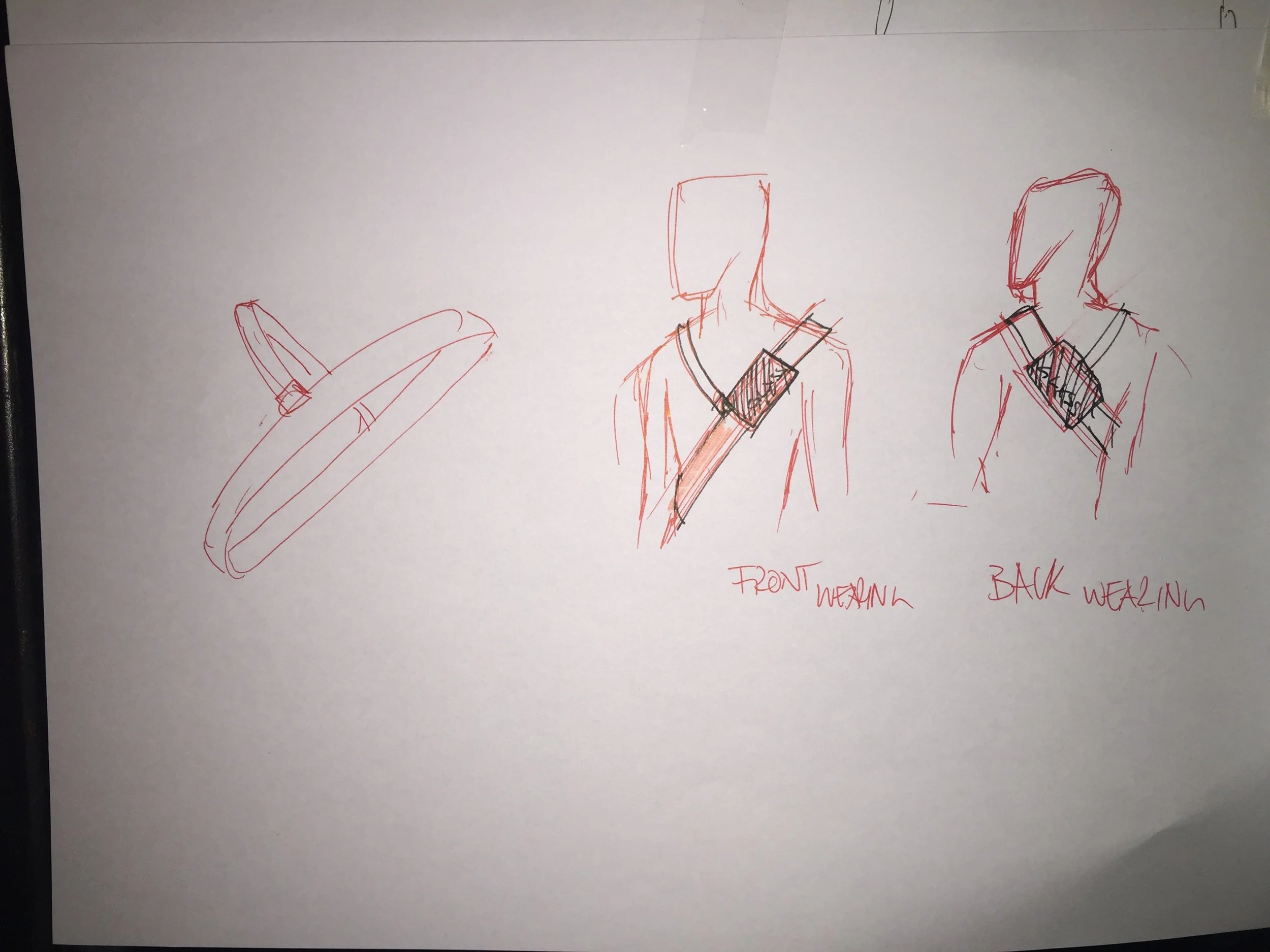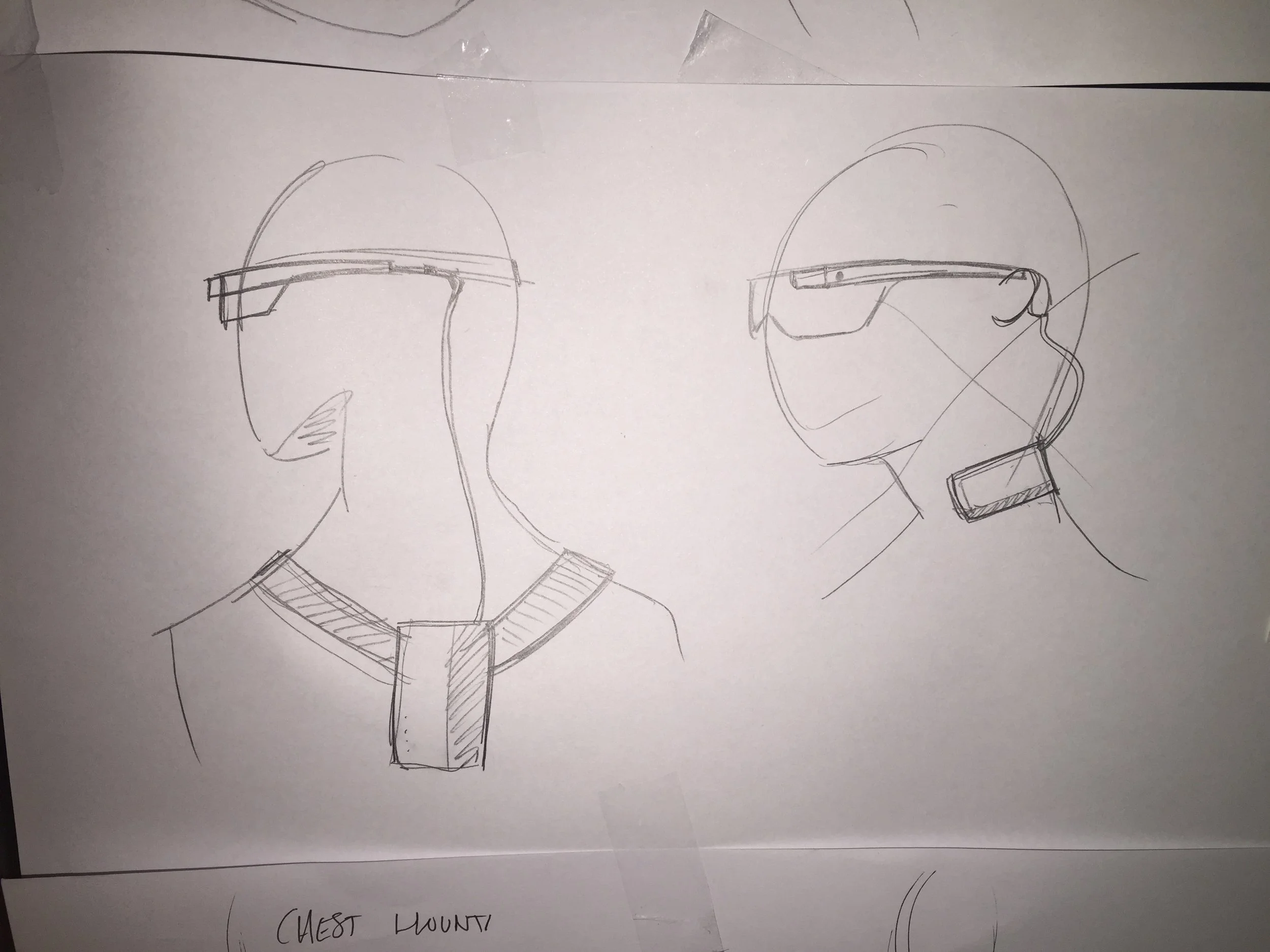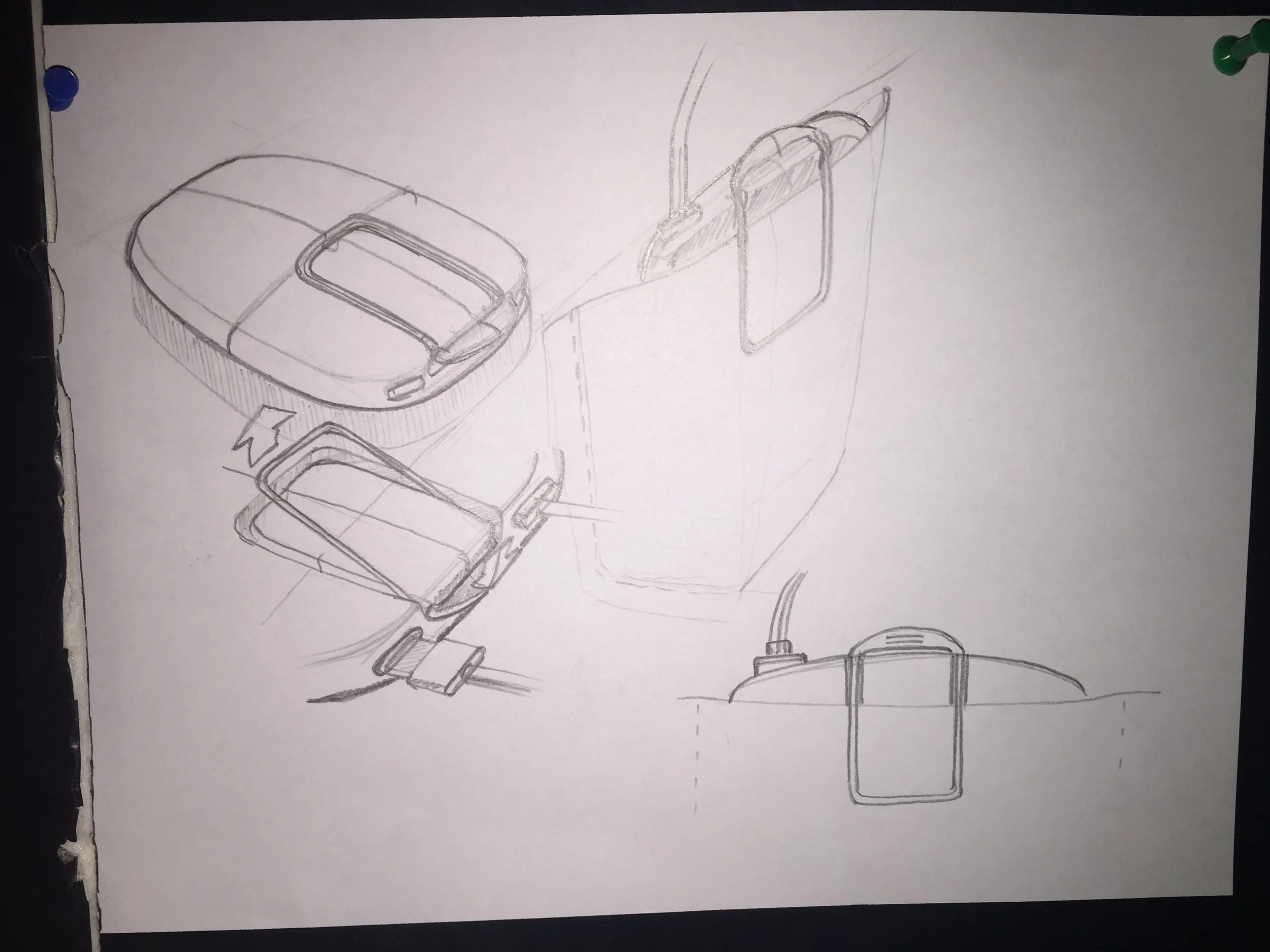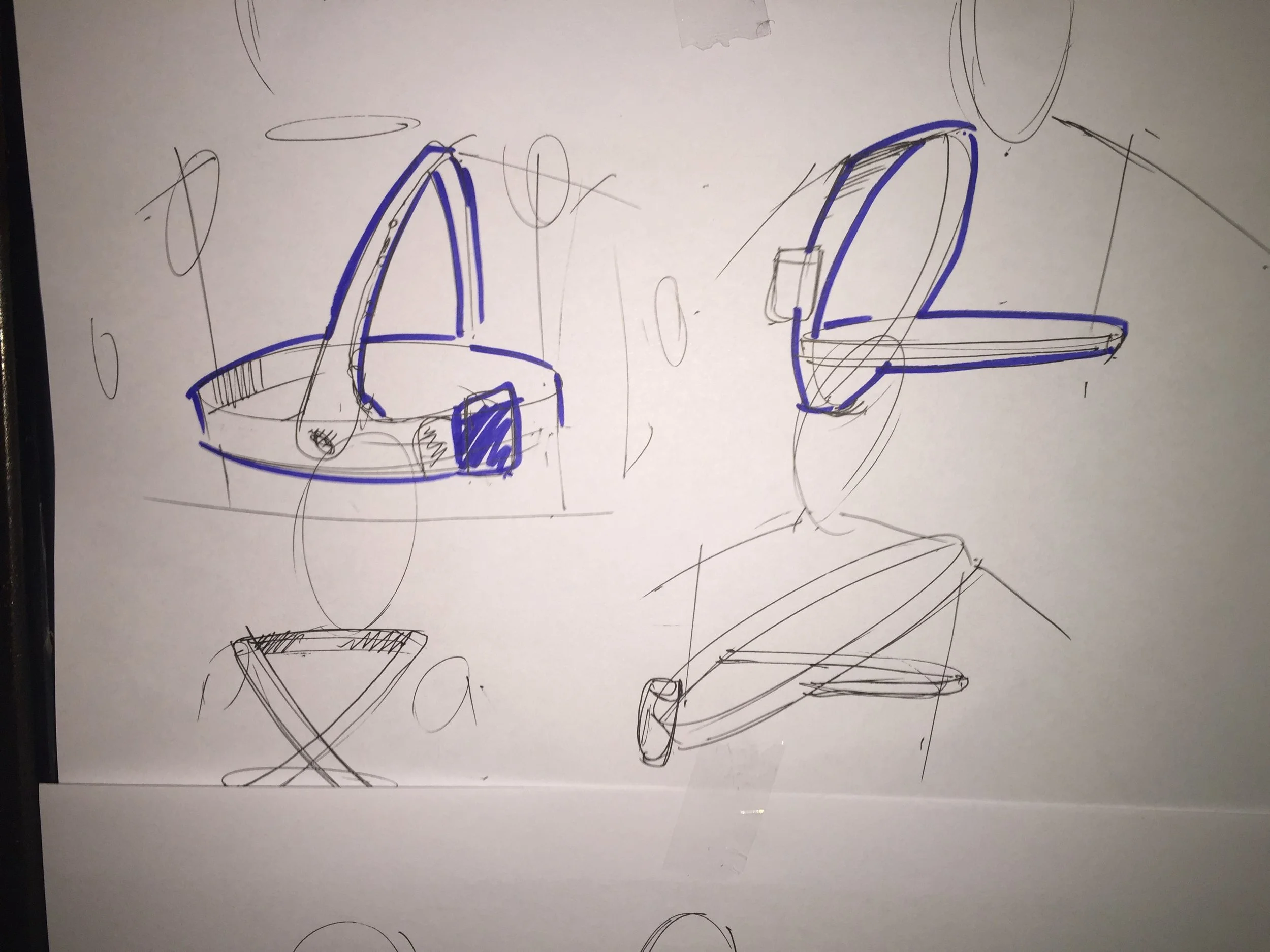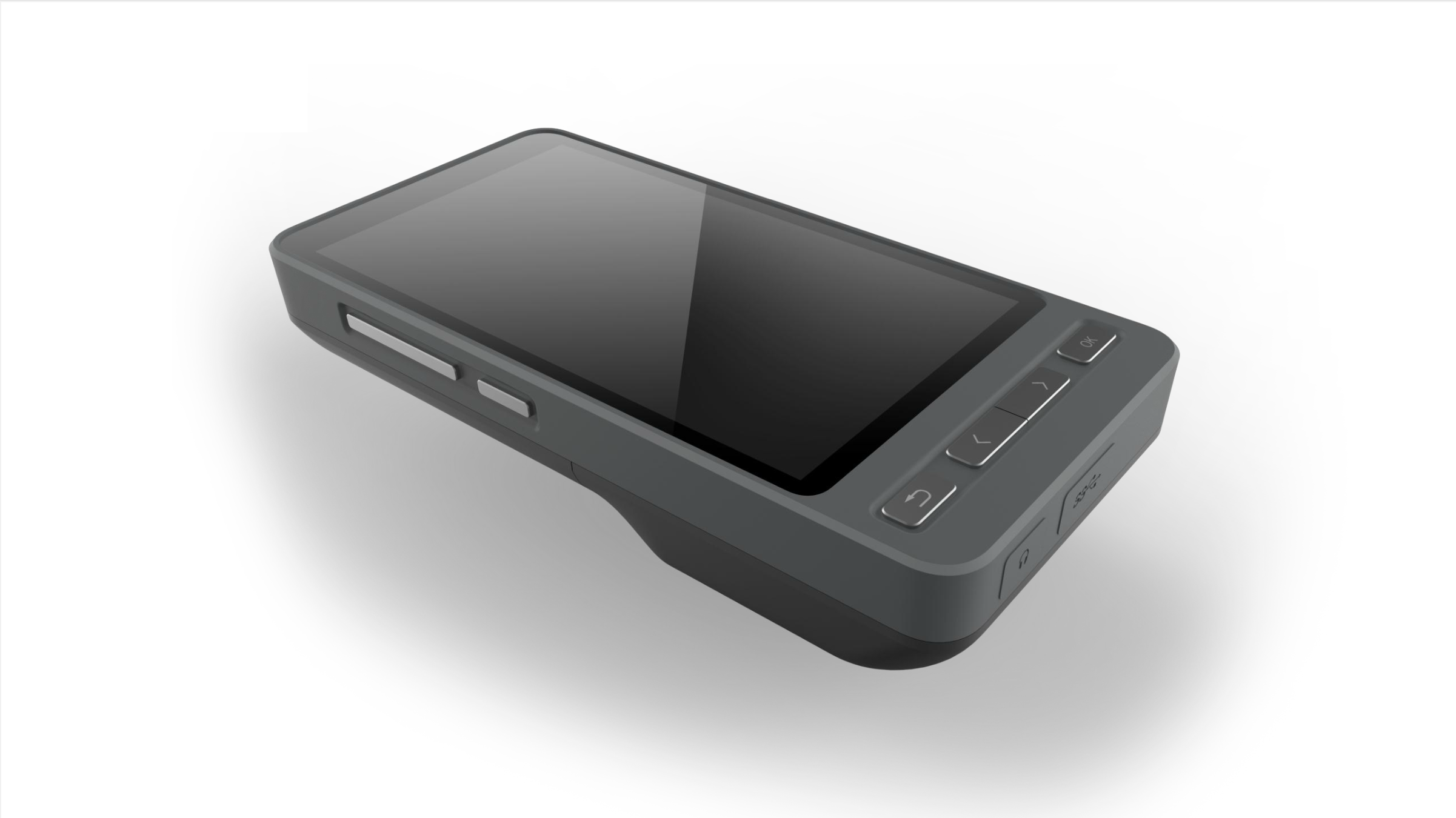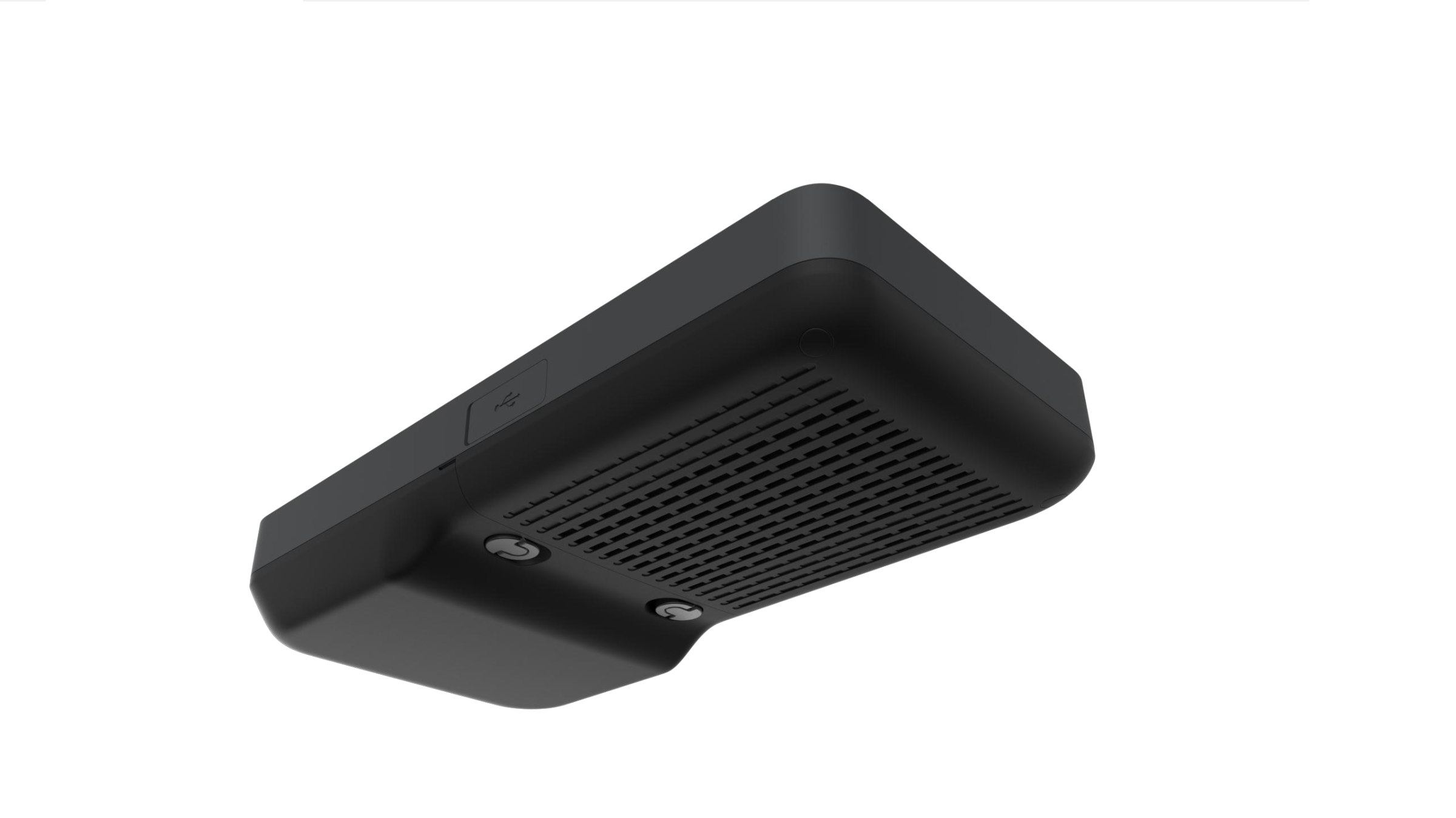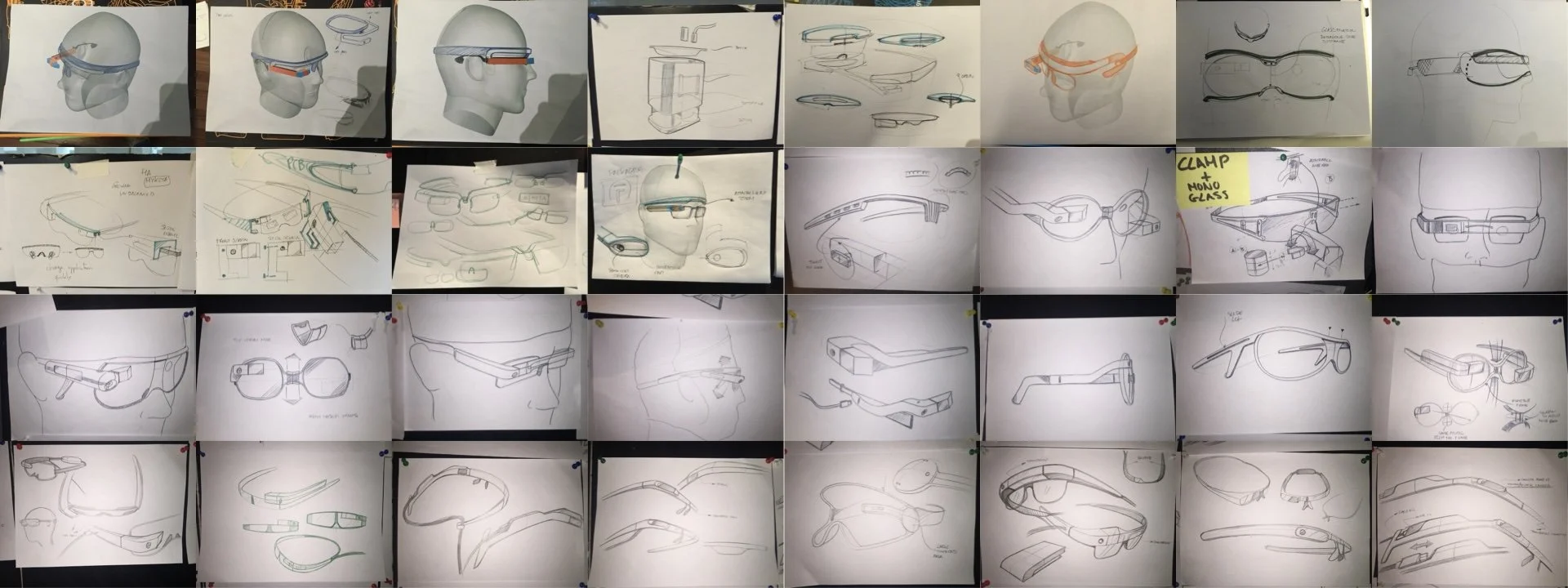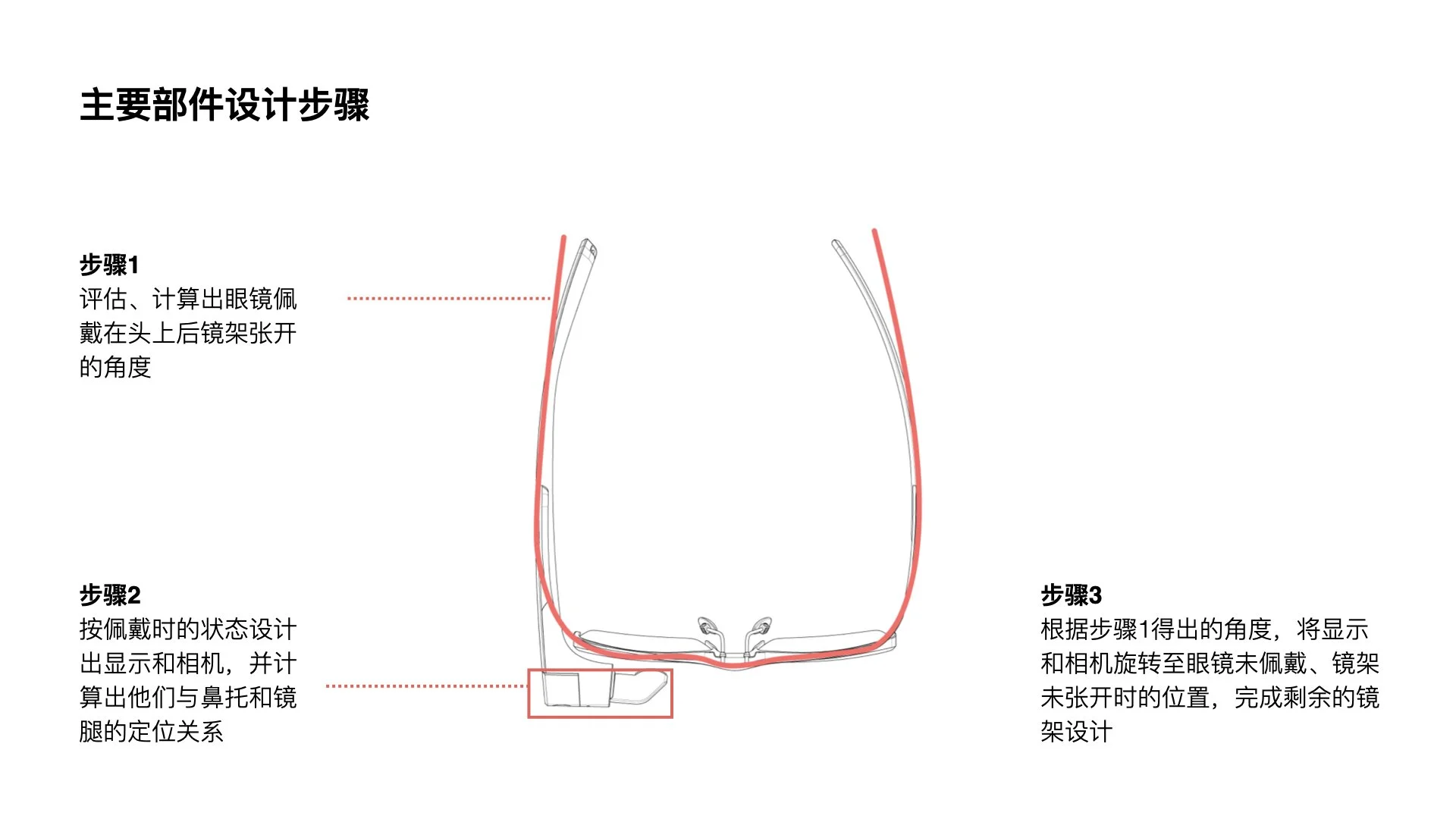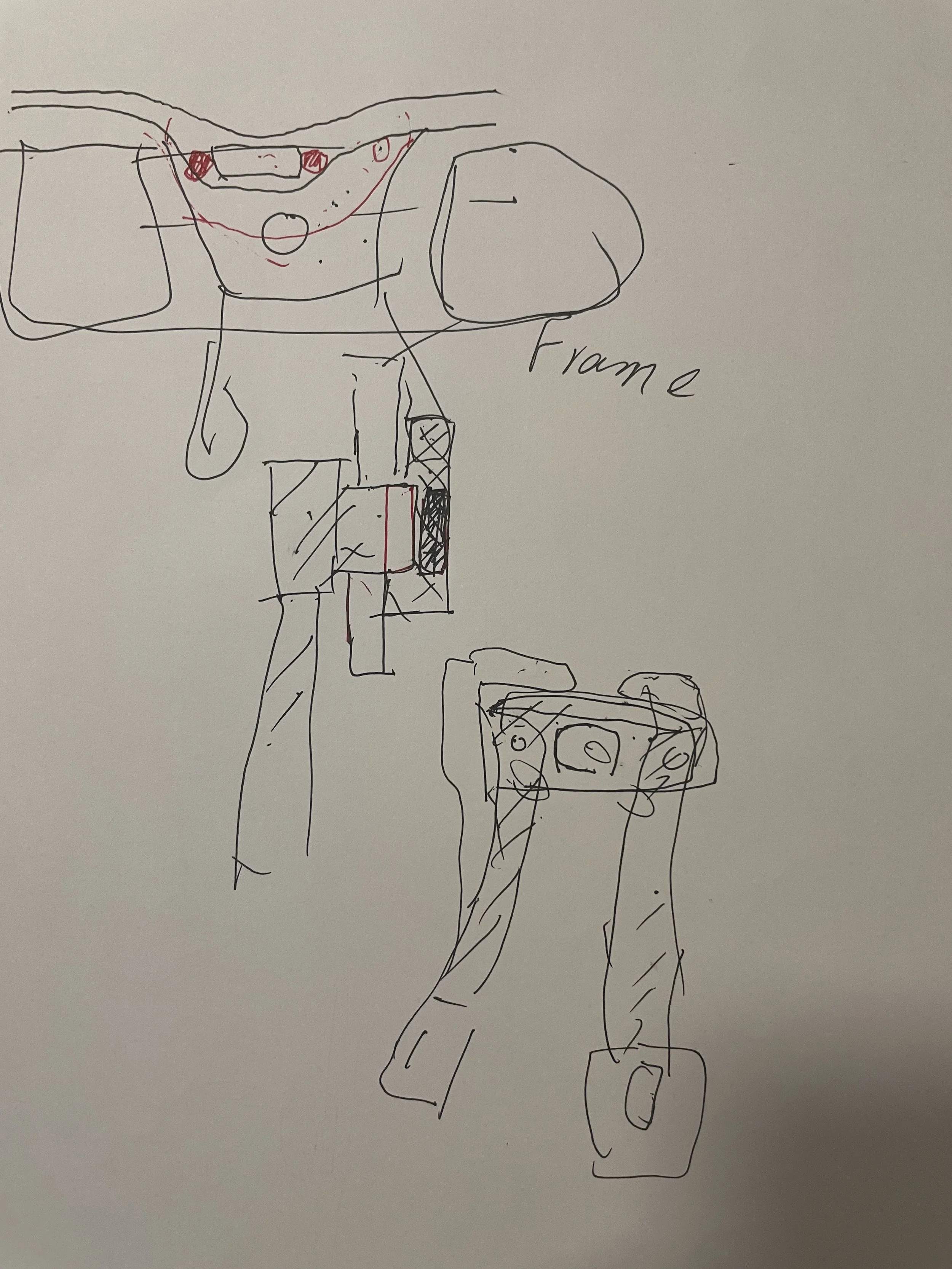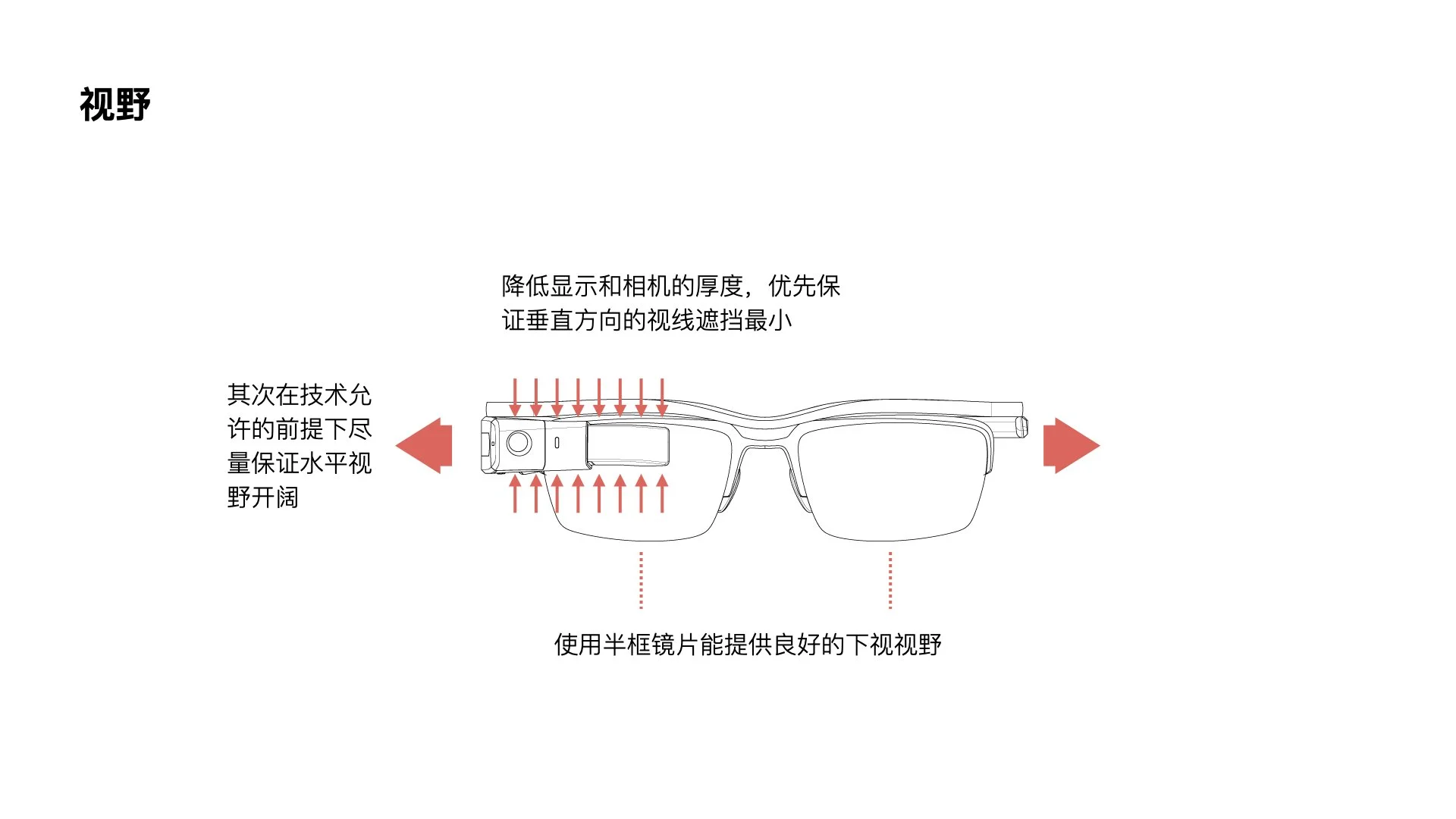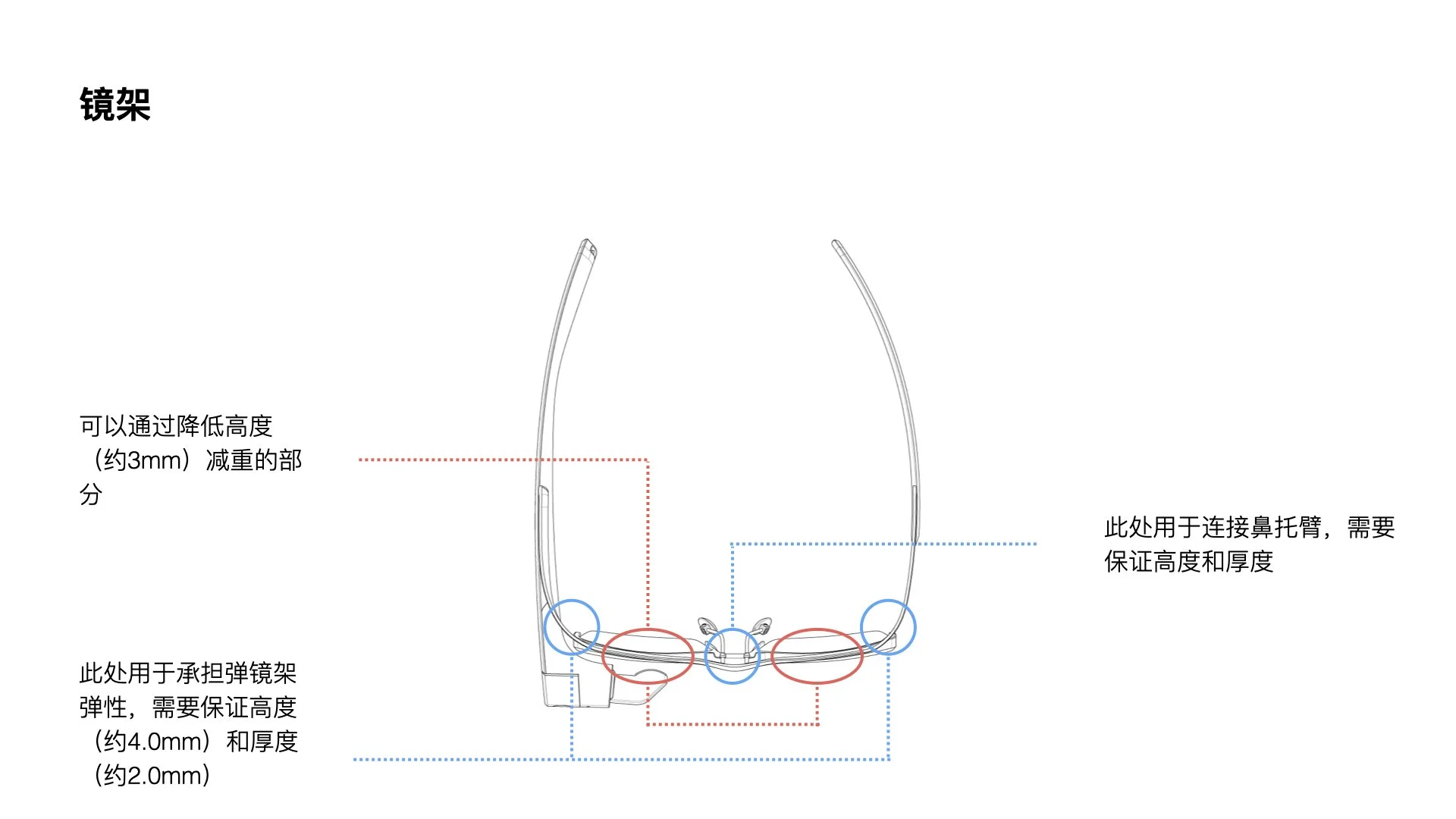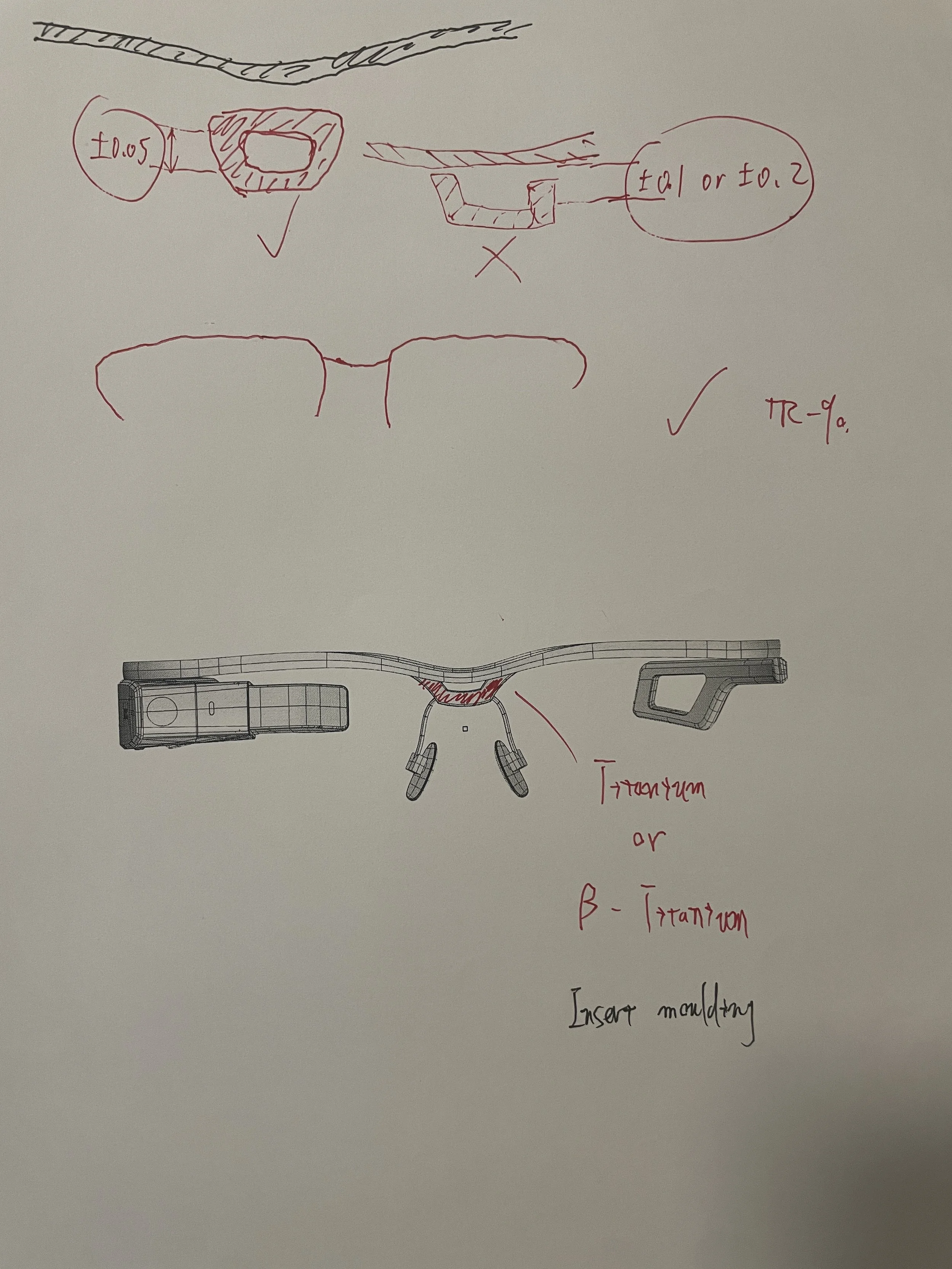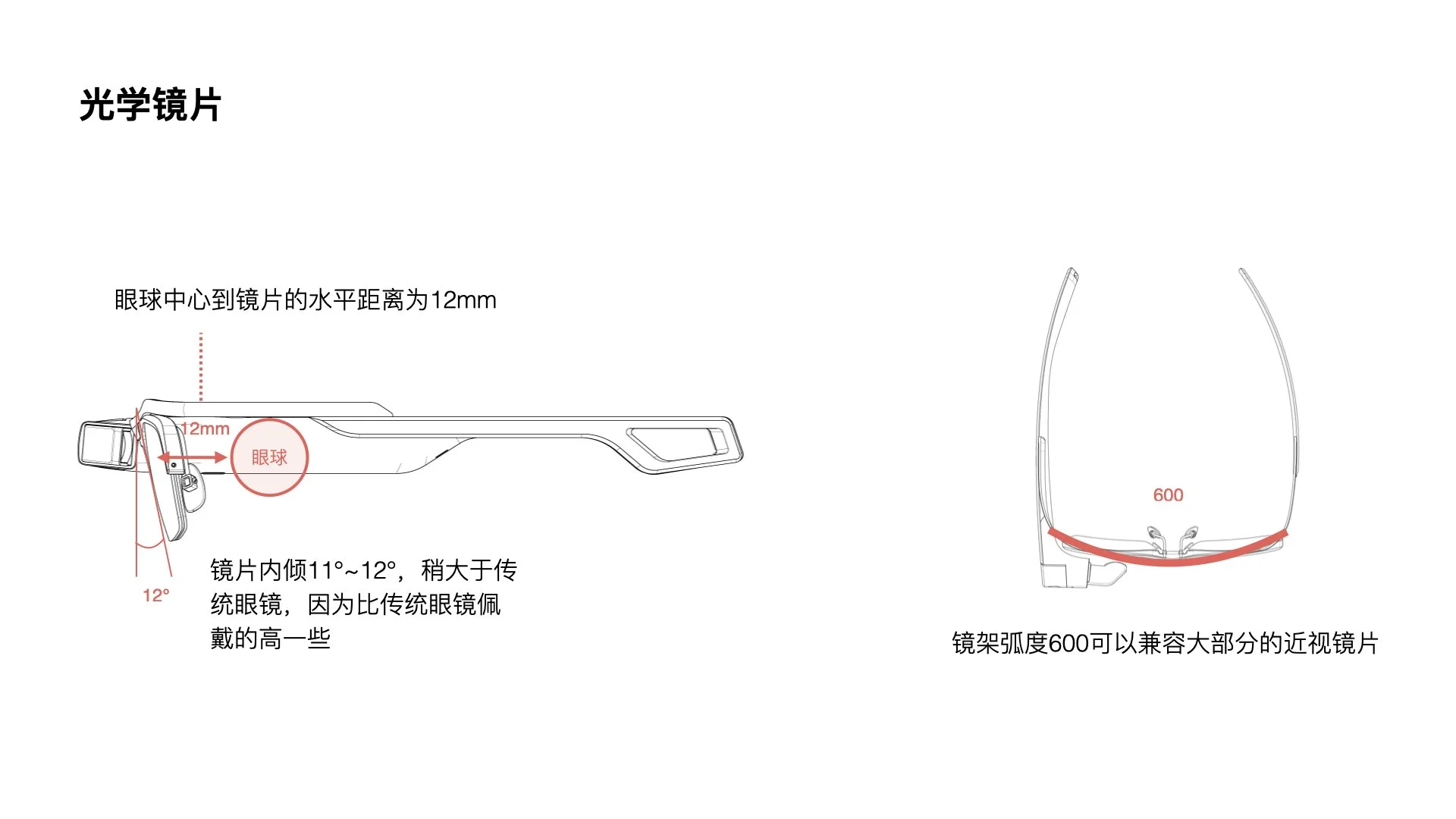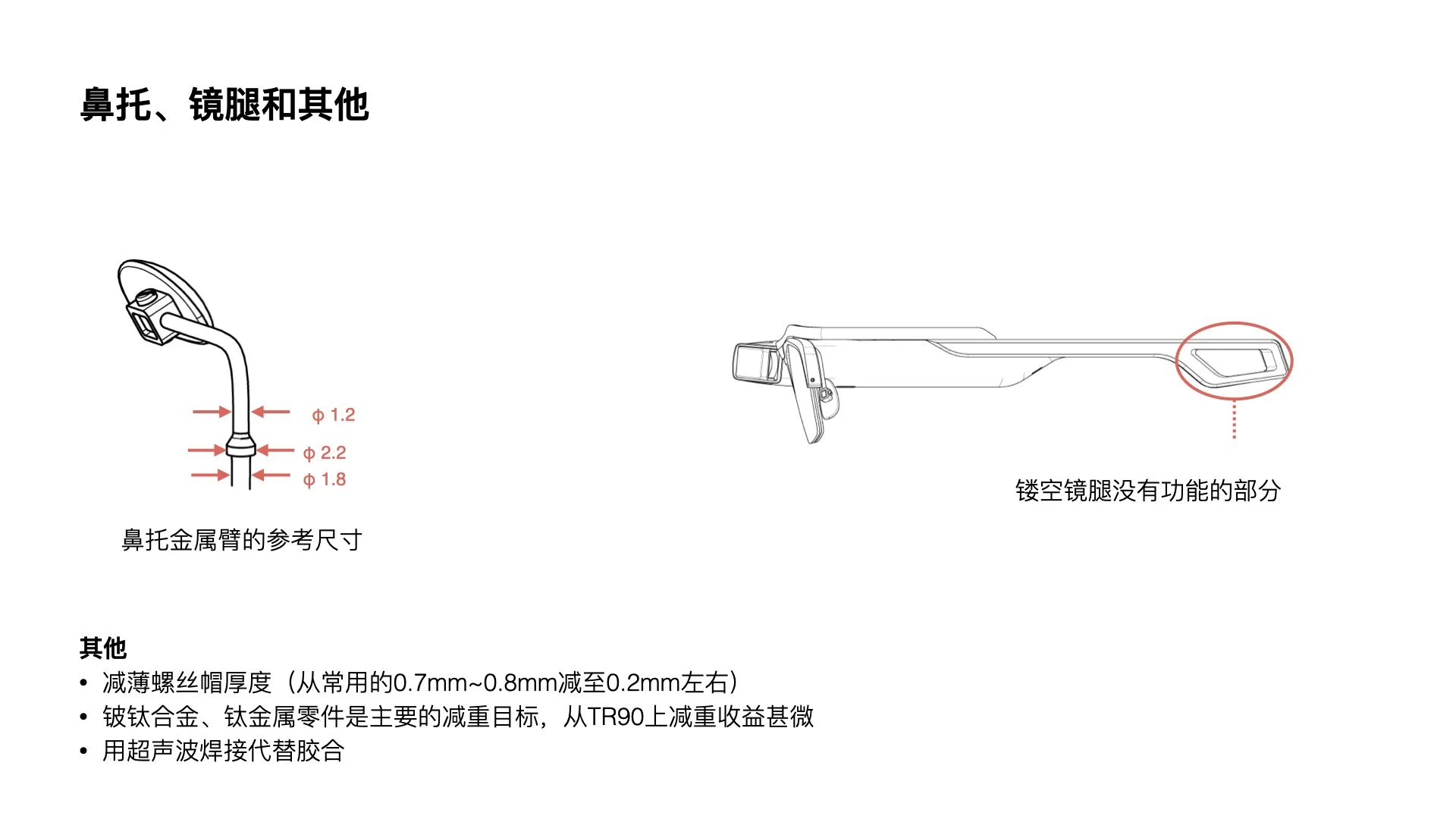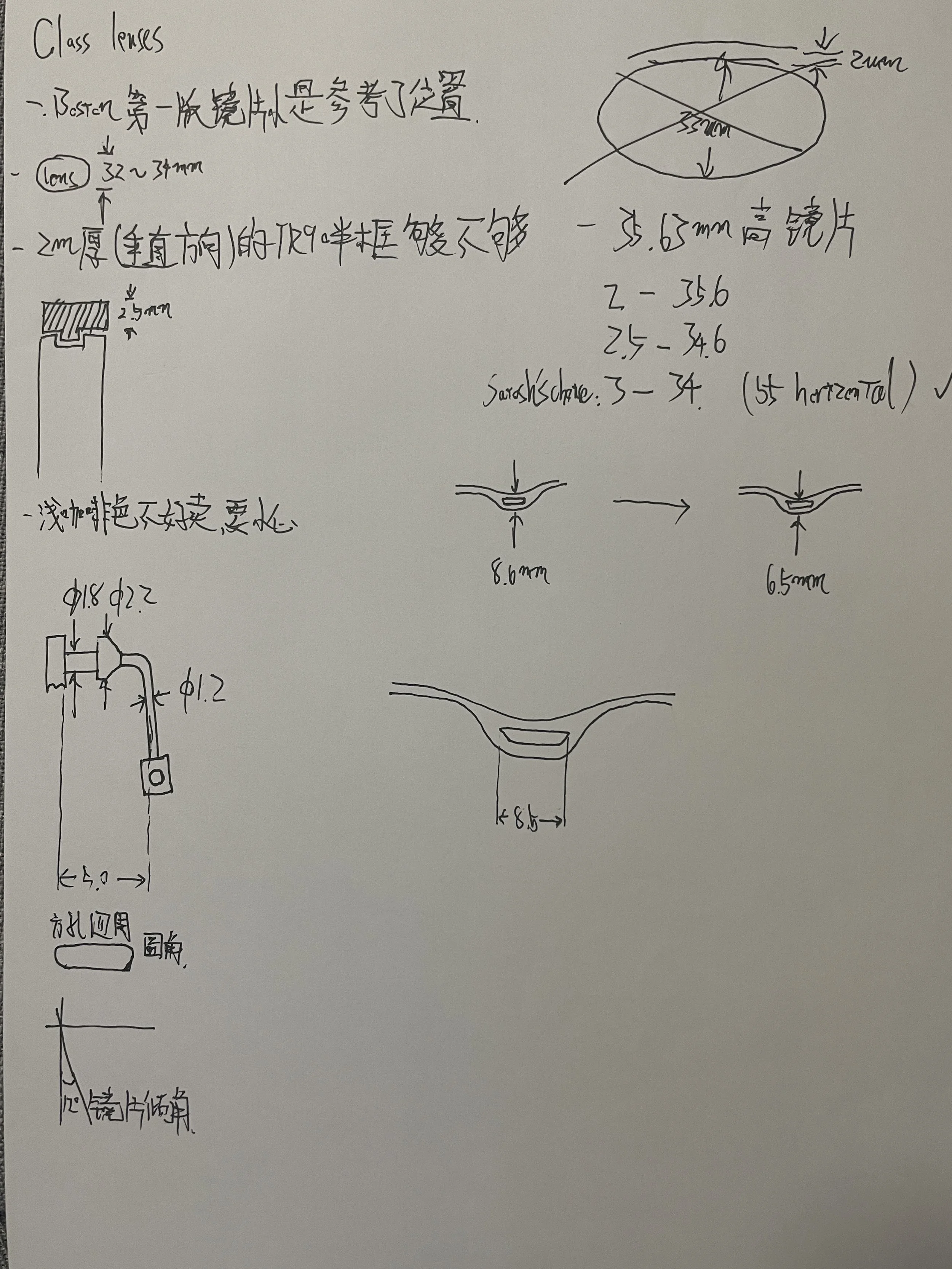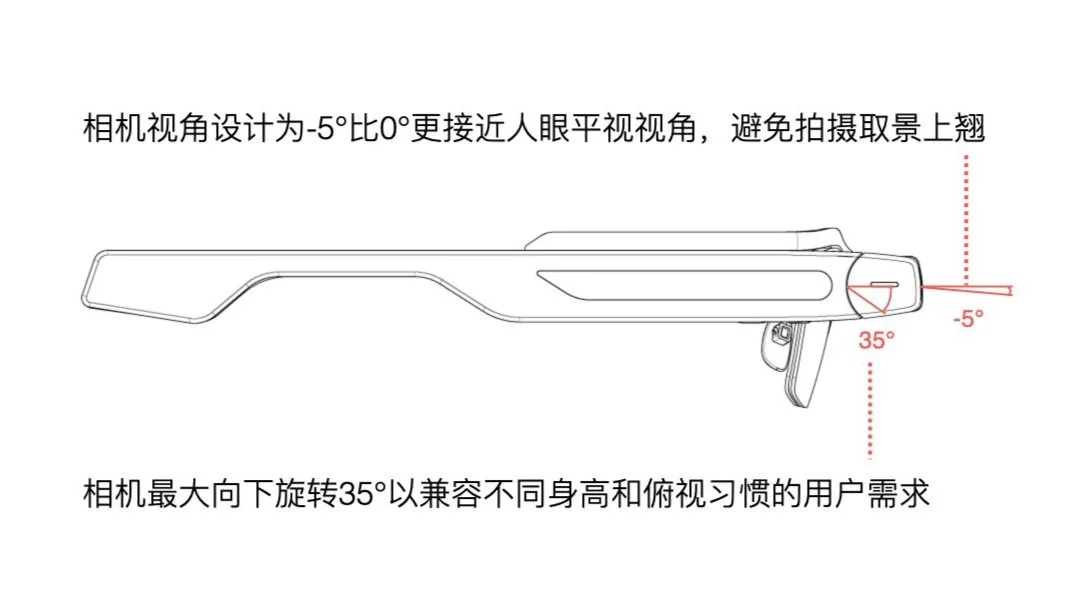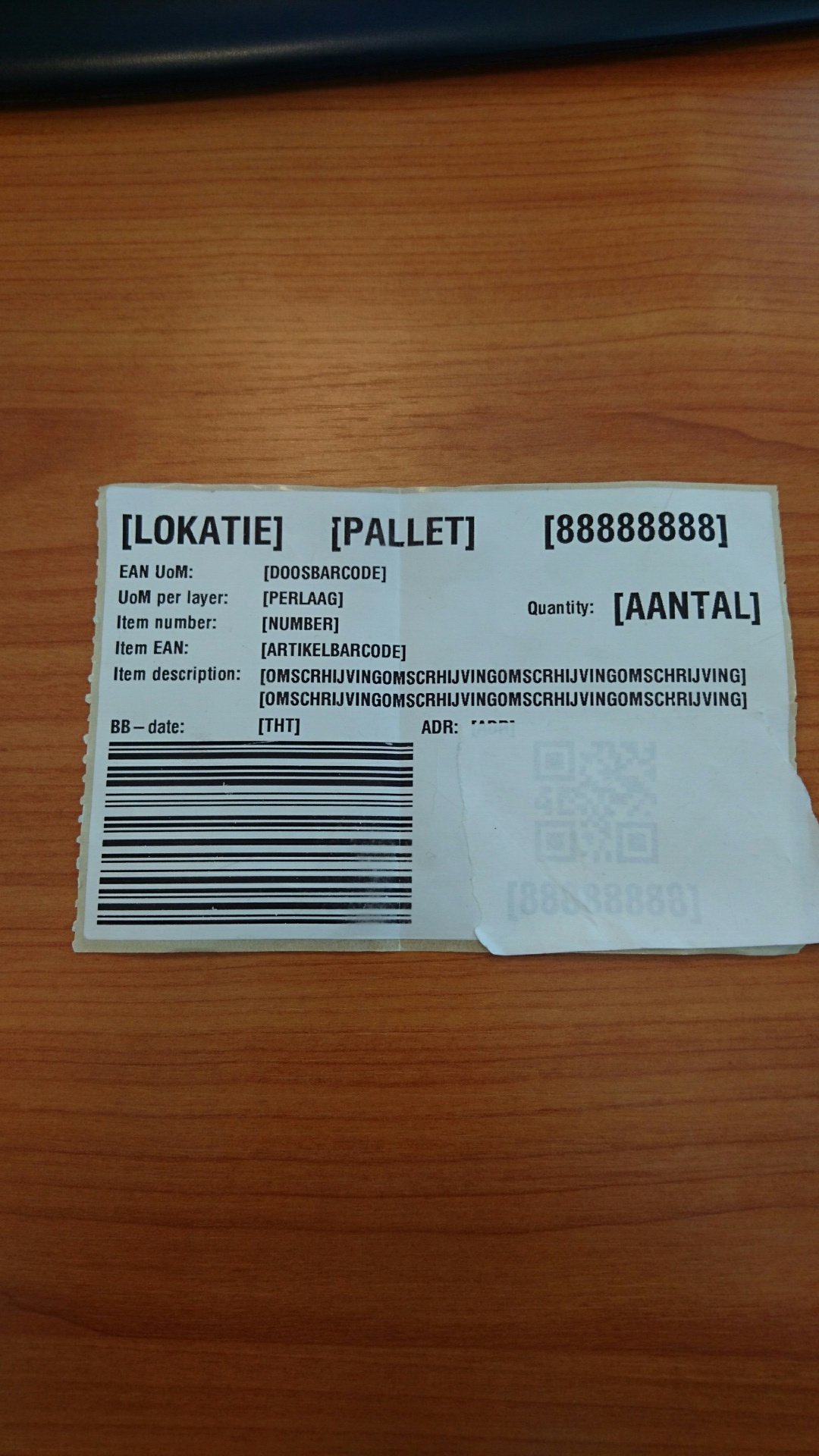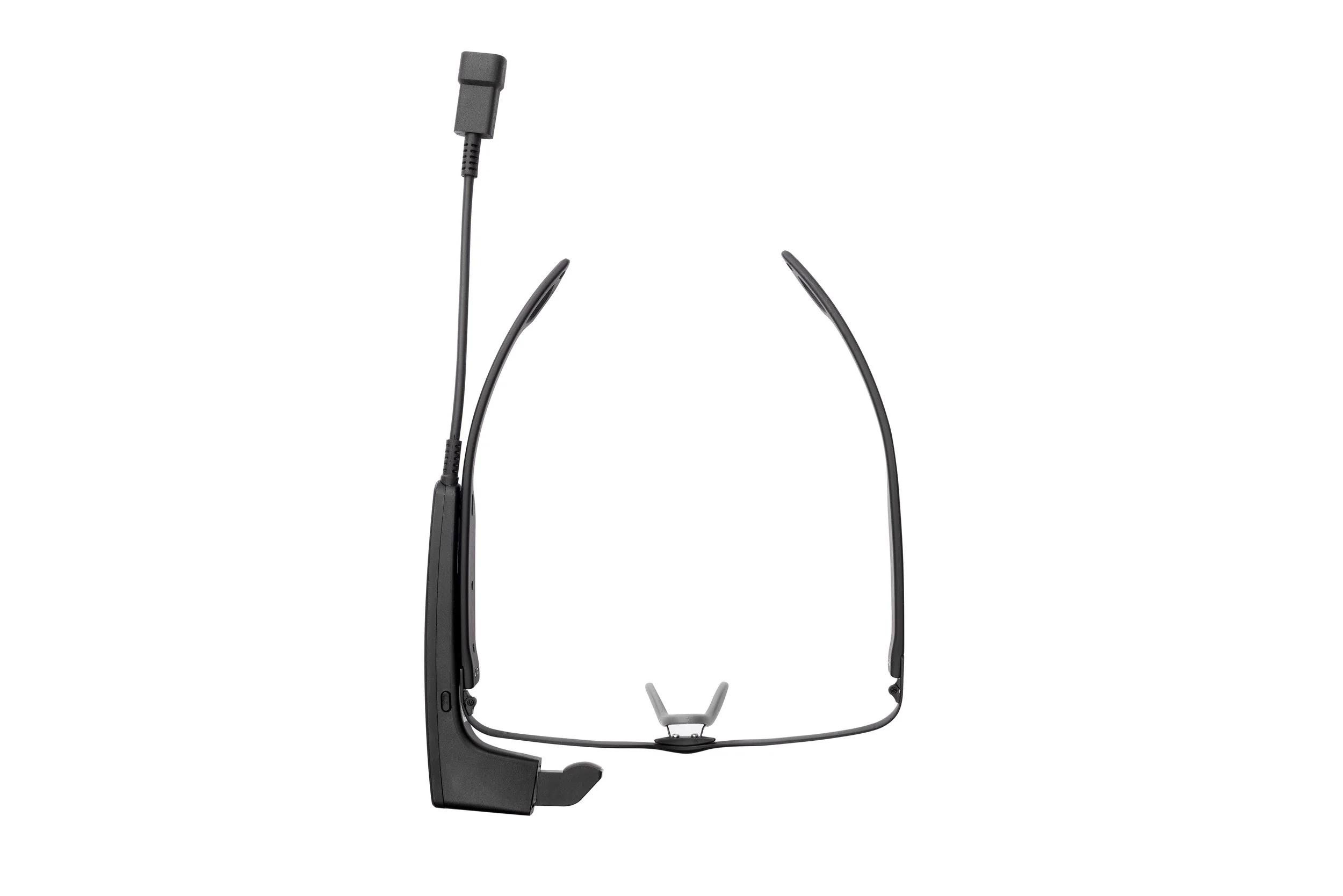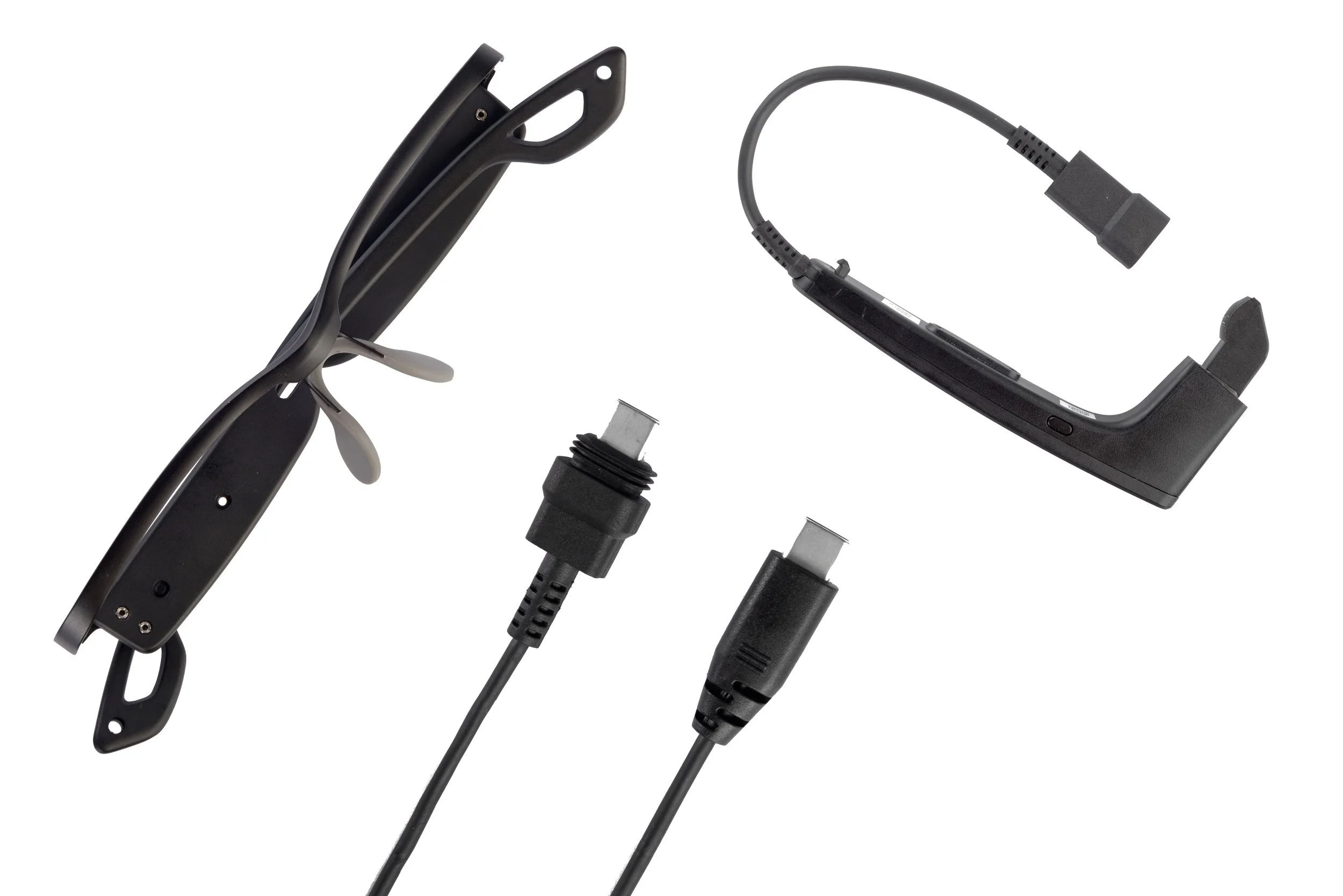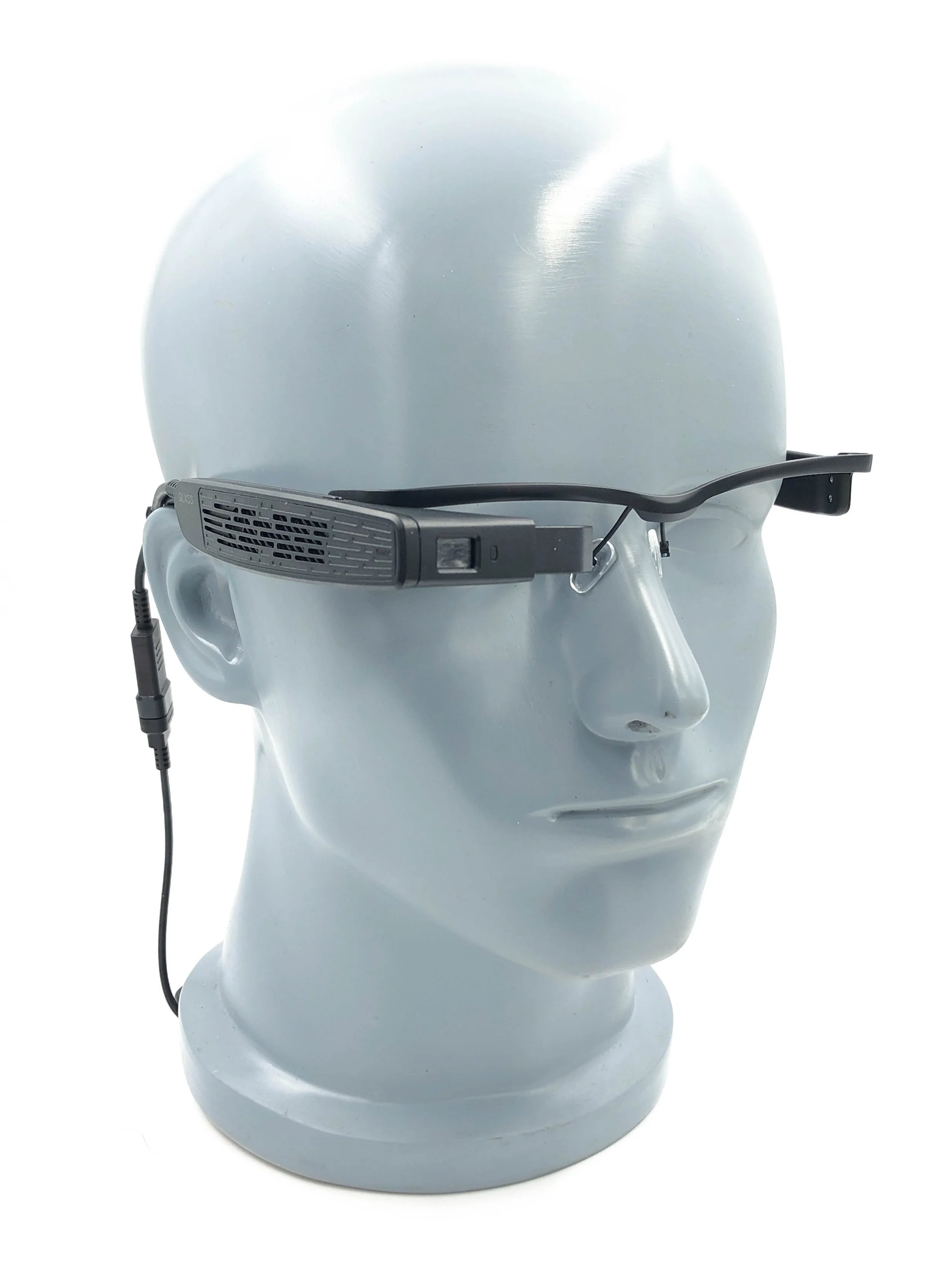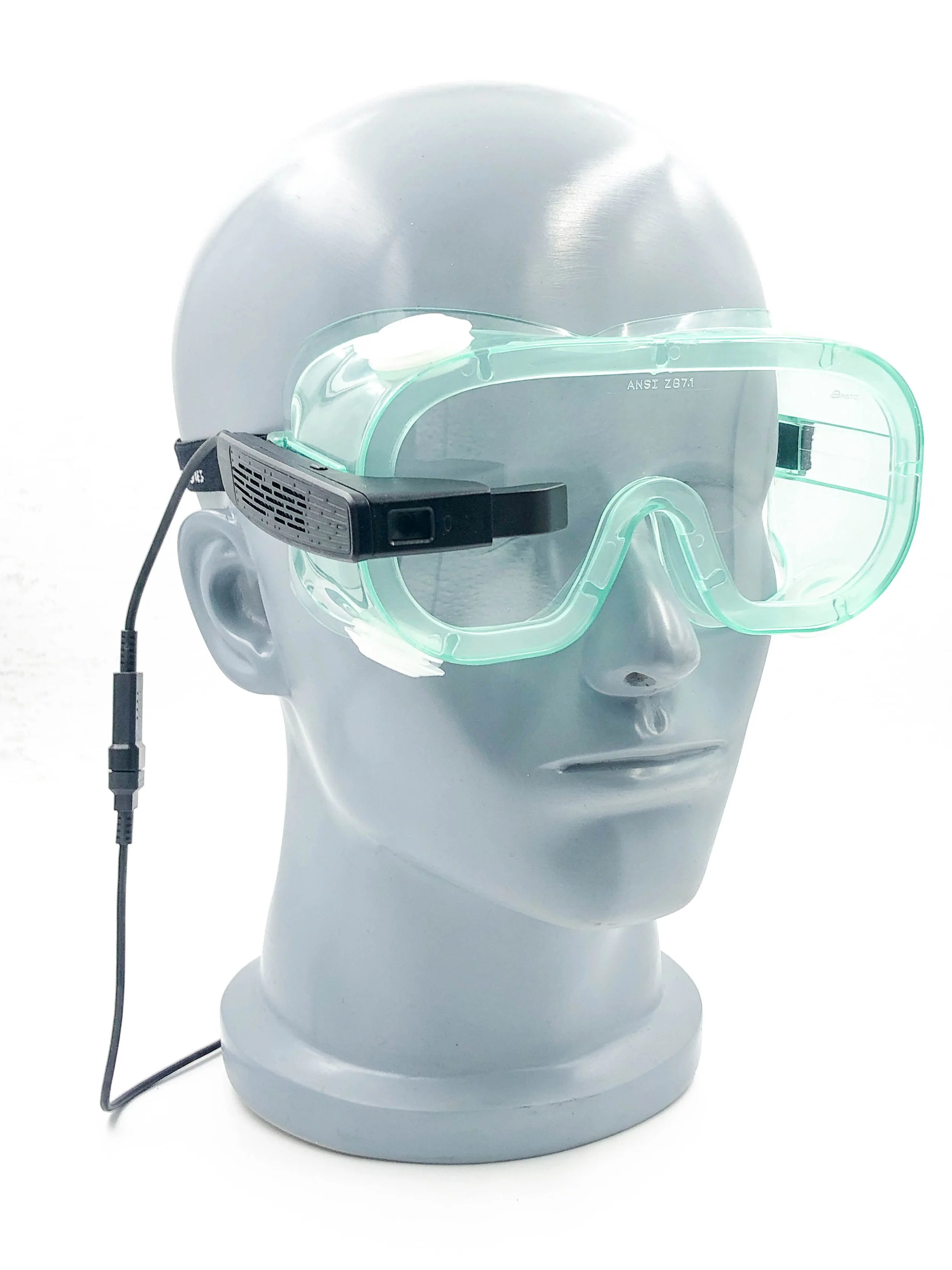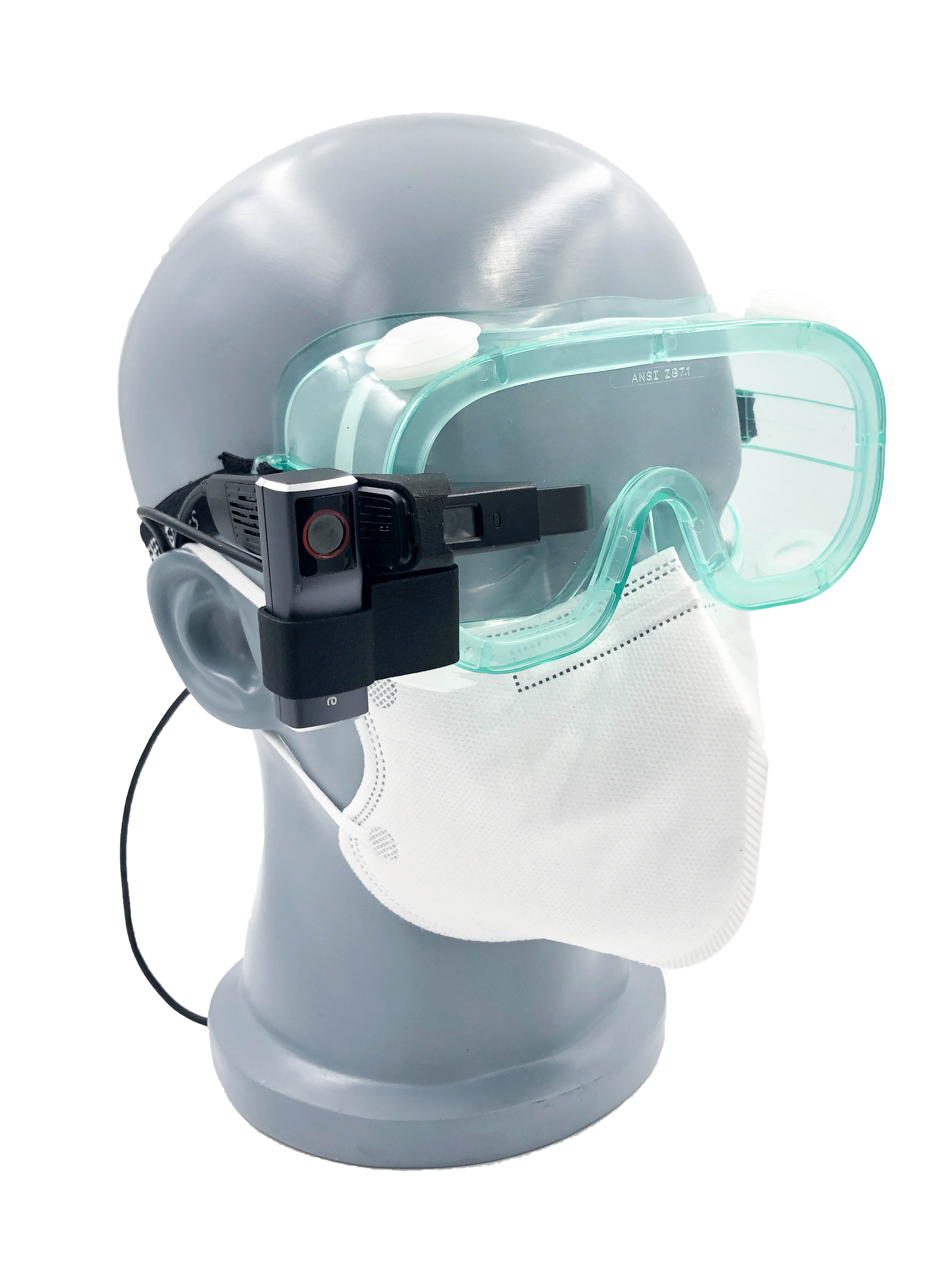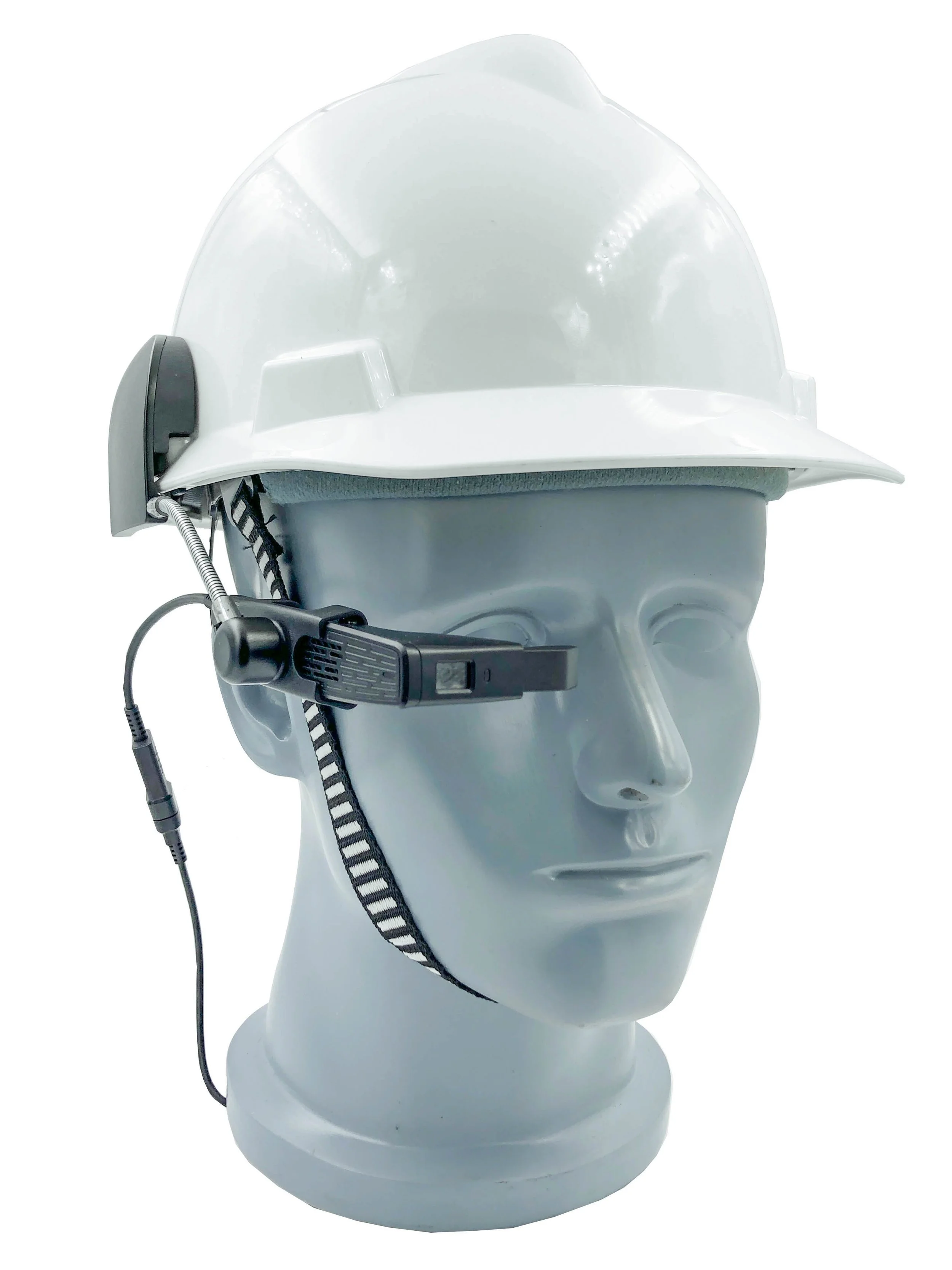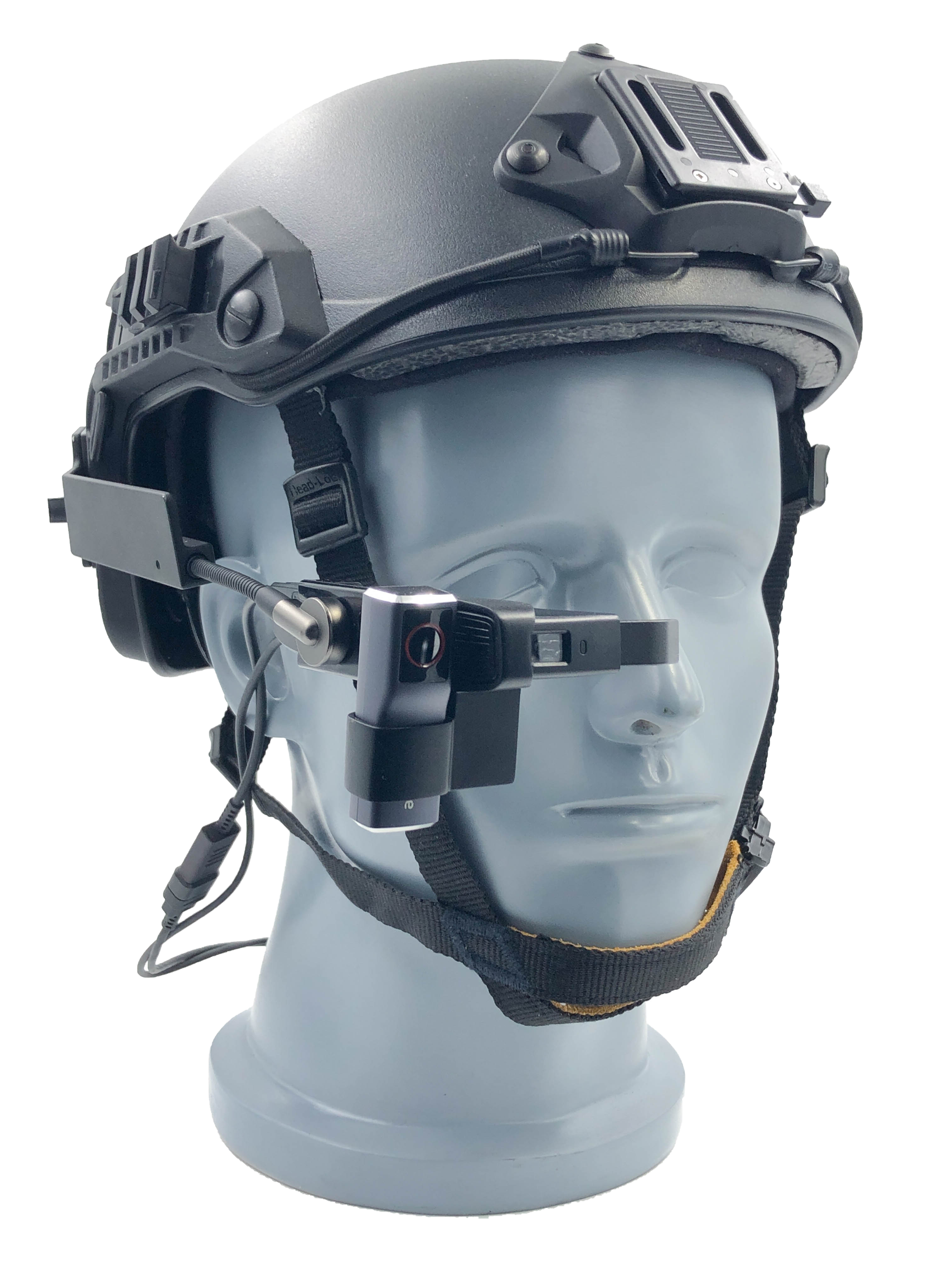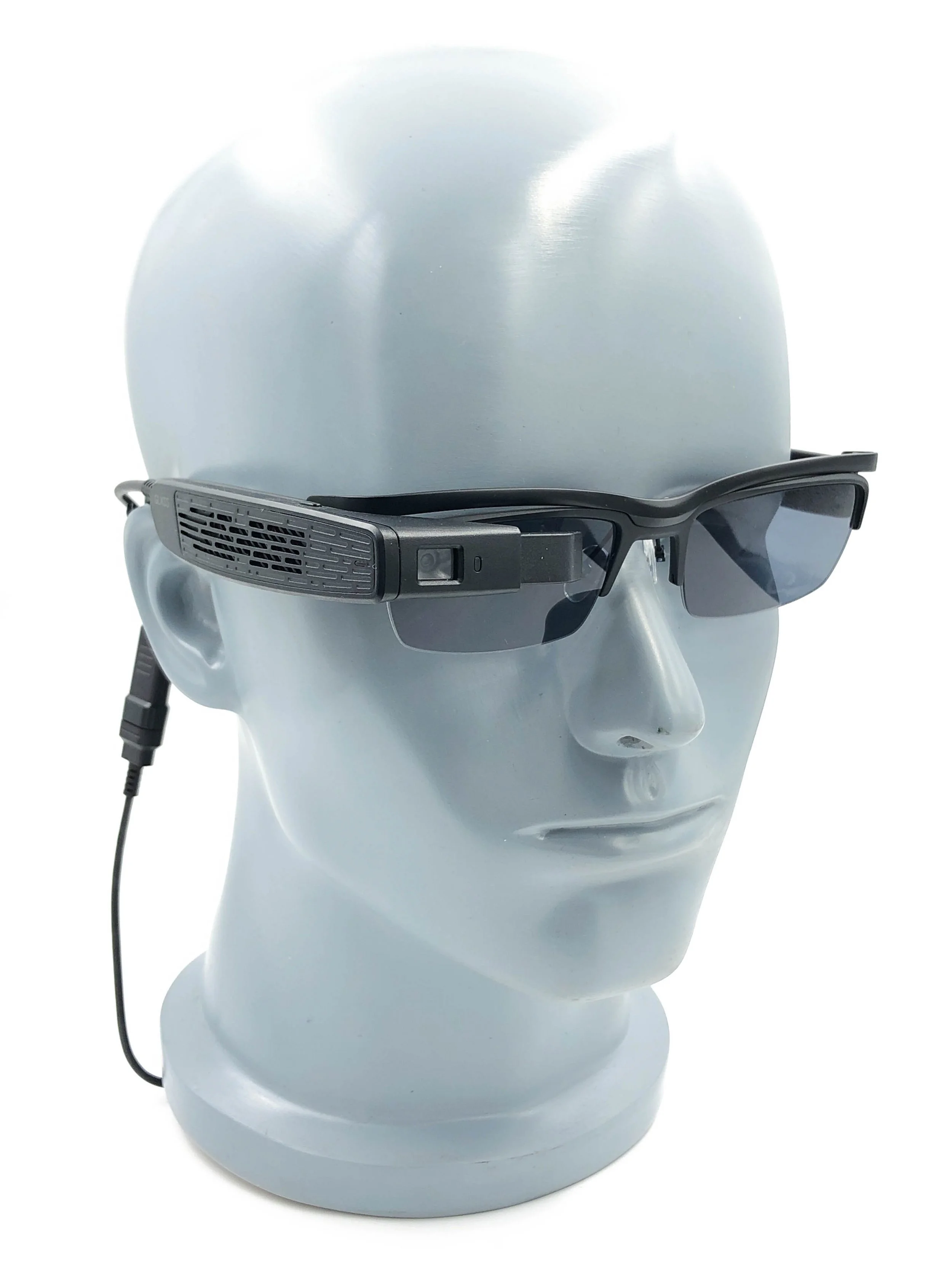GLXSS
Feb 2016 - Sep 2019
GLXSS Pro are tethered monocular smart glasses, which is one of the first device with this design. By placing processor and battery in the handheld host, the glasses weight only 33.6 grams, but complete with FHD camera, microphone, speaker, IMU sensors and up to 6 hours of battery life. The touch screen host allows user to run Android Apps on it directly, and have extensive window on the near-eye display for notification and operation feedback visualizations.
By succeeded all the advantage fro GLXSS Pro, we released GLXSS ME 1 year later. An Intel Movidius VPU (Vision Processing Unit) was embedded on a glasses for the first time. With powerful neural network computing capabilities, GLXSS ME can do object, facial, voice and gesture recognition in an efficient way never before, and it weights even 0.2 grams lighter than GLXSS Pro.
Contributions
Product define, industrial designer, system architecture and software design, project management
Design&Developing Tools
Rihnoceros, CATIA, Sketch, Figma, Adobe Photoshop, Xmind
Design For True Users
In 2015, LLVISION made initial progress in exploring enterprise AR, but customers raised many concerns about the product's wearability, camera capabilities, computing power, and applicability in different scenarios. As a result, we decided to develop a new AR headset specifically for enterprise users in 2016 to expand the market.
After in-depth research into various industries such as healthcare, logistics, manufacturing, and law enforcement, and interviewing dozens of users, we found that users not only have a demand for using mixed reality technology for marketing and training but also need to quickly establish remote collaboration, free up their hands, improve efficiency, and record work data. Based on this information, along with the technical feasibility at the time and the need for a long-term product roadmap, we determined that the product should have the following features:
Comfort and Ease of Use: The AR glasses should be lightweight, not cause discomfort due to weight, heat, or visual obstruction during typical extended use of several hours, and should accommodate different head sizes, face shapes, and vision needs.
Full-Scene Usability: The product should function effectively in all environments, with cameras capable of recording high-definition video under surgical lights in operating rooms or in relatively dim factory settings, compatible with both close-up hand shots and long-distance environmental captures, and displays visible in outdoor sunlight.
Comparable Computing Performance: The product should offer computing performance similar to that of smartphones and be compatible with the smartphone ecosystem to reduce the difficulty of integrating with existing enterprise apps and developing new ones.
At the same time, we strive to avoid incorporating flashy technical features that ultimately degrade the user experience in real-world usage.
Form Factor
Given the technology at the time, there was an irreconcilable conflict between powerful computing performance and long battery life on one hand, and lightweight AR glasses on the other. Additionally, the AI technology of the time was not mature enough to provide reliable human-machine interaction through machine vision or voice recognition alone. For enterprise users who occasionally needed to perform complex list searches or text input, it was necessary to retain the touch screen commonly found on smartphones.
Therefore, we opted for a USB tethered solution, placing essential but infrequently used functions at the user's waist. On the AR glasses, we retained only the basic capabilities of capturing images, sound, and displaying information. The touch screen, Intel Atom processor, wireless and two 18650 batteries were housed in a host device. The AR glasses and the host were connected via a USB cable, which supported hot swapping.
Ergonomics
By consulting authoritative anthropometric data and conducting extensive experiments, we defined the following specifications for the first model in this AR glasses series, GLXSS Pro:
Compatibility with over 90% of head shapes, accommodating different interpupillary distances, facial feature positions, and head circumferences.
The AR glasses should weigh less than 35 grams, with no noticeable imbalance in any direction, ensuring stable wear.
While in use, components such as the display, camera, and motherboard should not obstruct the user's line of sight.
Easy to put on and take off.
Made from skin-friendly, durable, and sweat-resistant materials.
The AR display module we selected is very compact, but this comes with a significant trade-off—the eye box is very small at a 20mm eye relief distance, necessitating precise alignment with the user's pupil. After extensive comparison and testing, we determined that the traditional "three-point" structure commonly found in eyeglasses, which uses the nose bridge and ears as reference points, is suitable for this product. The positional relationship and size variations of these three points among different people are significantly smaller compared to the top of the head and back of the head. Therefore, compared to a headband or helmet, this form factor is advantageous for achieving our wearing goals with a smaller size, lighter weight, and simpler structure.
Finally, we decided to concentrate all electronic modules in the right temple of the glasses and improve balance through appropriate weight reduction and wearing optimization. To accommodate different head shapes and nose-eye position relationships, we used flexible β-titanium frames and titanium nose pad arms that can be repeatedly bent and adjusted. We also applied a skin-friendly, antibacterial coating to the ABS housing of the electronic parts and used TR-90 for the other temple. The dimensions of all components were meticulously calculated to minimize the weight of the AR glasses while ensuring reliability and comfort.
To accommodate users with different types of prescription lenses, sunglasses, and those who do not wear glasses, we designed the lens attachments in a clip-on style.
Camera
To ensure compatibility with both close-up surgical procedures and distant industrial inspections, we designed the camera on these AR glasses to have an adjustable tilt angle ranging from -5° to -35°. We selected a camera module that supports continuous autofocus and focused on optimizing the camera's color reproduction. Additionally, we developed a spot metering mode specifically suited for high-contrast environments such as operating tables and factories.
Additionally, to guarantee the video streaming quality and computer vision performance, we have also collected various types of labels, codes and dashboards from enterprise users as well. The camera specification is defined based on capable to get crisp image for these enterprise scenarios.
GLXSS ME
The launch of GLXSS Pro received unanimous praise from enterprise users. In a market filled with bulky devices that hadn't yet achieved ideal AR performance, GLXSS Pro was recognized for its focus on practicality. However, we also received requests for product improvements—users wanted to eliminate the need for a host and allow the AR glasses to connect directly to a smartphone. Additionally, the rapid advancements in artificial intelligence and low-power neural network computing chips made it feasible to consider adding AI capabilities directly to the AR glasses.
GLXSS ME integrated the excellent lightweight design of GLXSS Pro while adding the Intel® Movidius™ Myriad™ 2 Vision Processing Unit, enhancing computing power at the camera, the closest point to computer vision. GLXSS ME also replaced the metal heat dissipation plate from GLXSS Pro with a grille design, reducing the weight by an additional 0.2 grams and preventing accidental burns.
GLXSS SE
By 2018, the GLXSS series AR glasses had achieved significant sales success. As the application range expanded, we noticed many users began using the products in scenarios involving motion, rain, and risk of equipment drops. Users also encountered overheating issues when attempting to extend usage time and improve AI performance. Additionally, many users requested improvements in product portability, more diverse shooting angles, and compatibility with industrial helmets.
Based on these findings, we upgraded and optimized GLXSS ME while maintaining its basic lightweight design philosophy. We removed the rotatable camera, made the electronic parts detachable from the frame, upgraded the chip to the more powerful Intel® Movidius™ Myriad™ X, increased the heat dissipation area, and provided a pan-focus camera version for AI recognition-focused users. Ultimately, the total weight of GLXSS SE increased by merely 10 grams compared to GLXSS ME, but its AI performance, ruggedness, and compatibility with various wearing options were significantly enhanced.
Thanks to its modular design, the GLXSS SE offers the following features:
Eyeglass frames and nose pads are produced by traditional eyewear industry manufacturers, significantly enhancing wearing comfort and reducing costs.
The electronic module can be mounted onto various helmets using an adapter.
The electronic module features a magnetic quick-release structure, allowing users to easily remove it to avoid obstructing their view or to handhold it for capturing special angles before quickly reattaching it to the frame.











